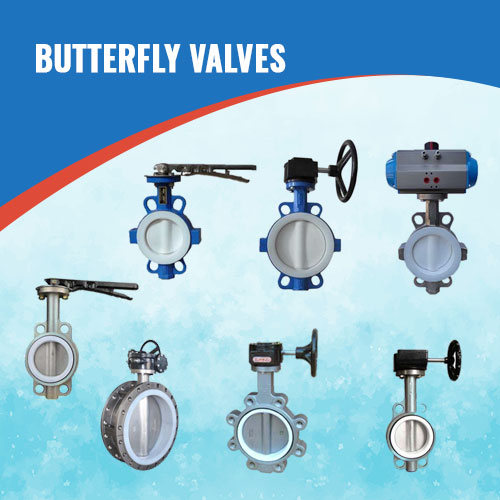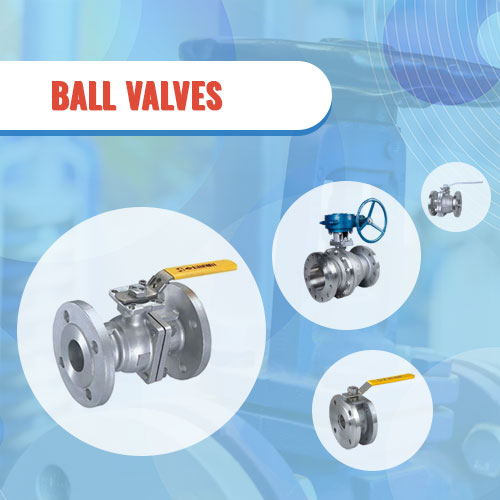If you have any questions or need further assistance, please let us know by sending an email to sales@egvalves.com Thank you!
Typically, there are two specific kinds of valves that are quite popular in the industrial valve – Butterfly Valve and Ball Valve. Although they both are different from each other, they both provide quite alike characteristics:
The prime difference between ball valves and butterfly valves is the way they look. The featured part of the ball valve is a spherical disc, which effectively controls the flow of liquids and gases. The spherical disc comes with a hole in it. The working principle relies on the actuating device on the valve stem.
The size of the port and the position of the ball in the valve body are two important factors of ball design. The port size refers to the ball valve’s whole diameter. Ball valves come in a variety of port sizes, including full, reduced, and regular.
The whole diameter is tiny in the conventional design, resulting in higher fluid flow resistance. This can be utilized as a substitute for gate valves in a variety of industrial fluid flow control applications.
This valve’s port size is nearly equivalent to the pipeline’s inner diameter. This type of design is appropriate for applications that require minimal fluid flow resistance.
The whole diameter of this valve is roughly equal to 60% of the valve’s inner diameter when compared to other port designs. This design is ideal for small, end-loaded valves with small-diameter balls.
On the other hand, butterfly valves are useful units that are designed to regulate the flow of water or some other liquid through a pipe. It is quite identical to the ball valve. However, rather than using a ball as an anchor, the butterfly valve uses a disc that is inserted into the center of the pipe. In an effort to connect it to the actuator located on the outside of the pipe, a rod is used through the disc.
What makes the butterfly control valve different from the ball valve is no matter what position it is in, the flow will create a pressure drop.
This device, sometimes known as a quarter-turn valve, contains a rotating disc that guides liquid circulation in a specific system. Because the disc rotates 90 degrees, the valve is called a quarter-turn valve.

The butterfly valve consists of a circular disc. The pivot axis of the disc is in the direction of the flowing material. The prime components of the valve cover an actuator, stem, disc, seat, and body. Each of these components is available in different materials, known as trim features.
The body of the butterfly valve comprises different metals like stainless steel, carbon steel, aluminium, cast iron, ductile iron, and exotic metals. The two common examples can be simply found in lug and water style. The latter one is installed between pipe flanges. The advantage of this kind of valve is the simplicity to install and replace.
The inside of the body of these units is lined up with a special elastomer seat. Usually, such seats are made up of white neoprene, carbon, natural rubber, Teflon, Viton, Buna, and EPDM. The choice of the material depends on the material, pressure, and temperature as well.
This part regulates the material flow in the conveying line. The materials for the disc are selected based on the application. The common materials include aluminum, ductile iron, aluminum, nickel-plated, epoxy coated, and stainless steel.
It is also known as a disc, and it is necessary for a butterfly valve to contain the flow of media. This aids in improving media flow, as well as sealing and increasing torque during operation.
This part goes through the valve center, connecting to the actuator and adjusting the disc for optimal material flow, and then closes off. Considering the size of the valve and application, the stem can be constructed in one or two pieces. Usually, the kind of material used in the construction of stems covers stainless steel and carbon steel.
These are of different kinds, like electric, pneumatic, gear, electro-hydraulic, and manual handle.
The two most popular body styles in butterfly valves are water and lug. The lug style acts as a real union ball valve that makes the connected pipes to be taken off while the system remains on. To accomplish the basic role, they require the two sets of bolts, with each one attached to the correspondence flanges.
Another is water-style which does not feature many bolt mounts. In general, the unit feature 2 holes in order to make the alignment with the piping. The best part is that they ensure security and can survive twice the pressure of lug-style units.
Triple Eccentric Butterfly valve ensures high performance and are usually found in refineries. Besides, they can be found in offshore systems, specifically in environments with extreme conditions.
The double offset units can endure up to 1200 degrees Fahrenheit temperature. These kinds feature a double offset disc and a stem that sets the disc position when closed.
In this, an inflatable seat is used to seal the disc. When the disk closes, the system pumps up the bladder. In these kinds of units, the seal gets created once the disc is closed, which is why less power is needed to close the disc.
Just like other valve types, both ball valves and butterfly valves are made up of a several metals combination like cast iron, stainless steel, brass, and PVC. Cast iron is also a great option for valves. This is because it provides better structural integrity and can endure a broad range of temperatures. This aspect makes the material a good choice for industrial applications.
Both types are quite durable, have a long shelf-life, and are comparatively inexpensive to buy. The similarities of these kinds of valve make it hard decide which valve to use for a specific application.
A ball is put in a tunnel through which fluid flows in the ball valve, which is a type of quarter-turn valve. The valve opens and closes through a hole in the ball. The fluid simply flows through the hole and the valve opens when the ball is positioned in such a way that the hole runs in the same direction as the passageway. When the ball is positioned so that the hole is perpendicular to the passageway, however, the fluid flow is restricted and the valve is closed.
The ball is controlled from the outside of the valve, which is typically opened and closed by a handle that may be rotated 90 degrees, or a quarter turn, back and forth.
With a flat circular plate, the valve is placed to the pipe center and the plate has a rod through it, which is attached to the handle on the outside of the valve. The valve operates by rotating the handle and turning the plate over either in a linear direction or perpendicular to the flow.
Unlike the ball valve, the plate in the butterfly valve always remains within the flow. Irrespective of the position of the valve, of pressure drop is always included in the flow.
Agricultural needs, Sprinkler systems, wastewater treatment, rose processing, high-temperature areas, vacuum service, HVAC, and petroleum industries.
Butterfly valves seal the pipes, protect them against impairment as well as act as an energy saver. For instance, in extreme cold months, the valves lock in heat allowing liquid in the pipes to flow freely. Also, these will regulate the pressure level inside tubes, pipes and endure high levels of oil and corrosive properties of salt.

The valve’s heart, the ball, is widely utilized in commercial and industrial systems to control fluid flow. Ball valves are utilized primarily for flow control applications in high pressure and high-temperature conditions because they have a tight shut-off characteristic.
The ball valves are used in different industries, such as water treatment systems, pharmacy, chemical, paper making, petroleum refining, long-distance transport pipes, electricity, and so on.
As far as industrial valve types are concerned, you need to understand that there is a difference between the ball valve and butterfly valve. Both the units and manufacturing processes are different. They have a significant impact on the capabilities and specifications of the units.
The material used of both the units determines their longevity and capability. For instance, strong metals used for installation purposes can control the flow of heavy liquids under high pressure, specifically in far-away locations.
It is significant to go for a valve based on the specific application. Typically, lightweight units are ideal for fuel line control or small water lines. For instance, swimming pools, sprinkler systems, and aquariums need light-duty butterfly valves.
On the contrary, heavy applications like gas pipelines, and oil transport systems need high-quality valves that can stand the test of time.
Choosing the valve based on the kind of application will likely reduce mechanical failure.
The control method is another significant aspect that you should consider while opting for a device. Some units work manually which you can control based on your needs, while others are automated.
Another important aspect to consider while choosing the valves is the degree of precision. Well, both the units are designed for a specific amount of leakage during the application. The level of precision determines the reliability of the unit over the long haul.
Although both butterfly and ball valve offer almost identical applications, these two types offer different benefits over each other. Here the need is to consider the benefits of each of them, before deciding on which valve to invest in.
The leading valve manufacturers– EG Valves Manufacturing Co., Ltd is ready to help with queries related to their products. Our expert’s guidance will help you make the best decision while choosing between a ball valve and a butterfly valve.
